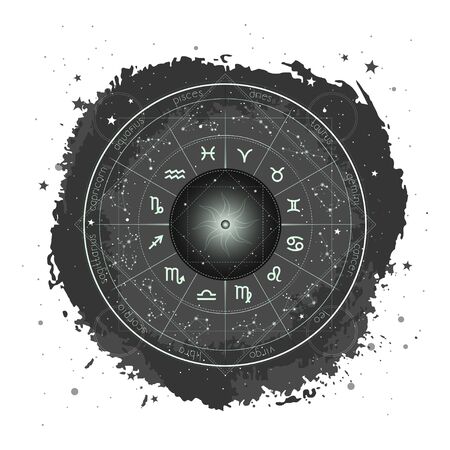Setting the Scene: The Wheel of Fortune in Celtic Tradition
Step into the mists of ancient Britain, where the whispering winds over emerald hills once carried tales of fate and fortune. The Wheel of Fortune, now a familiar motif in modern tarot and culture, has roots that spiral deep into the heart of Celtic mythology. For the Celts, life was not a straight path but a great turning wheel—ever shifting, ever evolving. Destiny was not seen as a rigid line drawn by an unseen hand, but rather as a living web of choices, chance, and the mysterious workings of the Otherworld. In these olden days, fate was woven by supernatural beings like the Morrigan or the triple goddesses, who spun and cut the threads of mortal lives with deft fingers. Yet, there was always room for human courage and cunning to tip the balance. British folklore is rich with stories of heroes outwitting doom or embracing their destiny with open arms, reflecting an intuitive trust in both the guidance of ancestors and the wild dance of fortune’s wheel. Through this lens, we begin our journey—exploring how ancient Celts viewed fate not as something to fear, but as an invitation to participate in life’s grand unfolding.
2. Spinning Yarns: Storytelling in Ancient Times
In the mist-shrouded landscapes of ancient Britain, before ink met parchment, the Celts spun their wisdom and wonder through the oral tradition of storytelling. Fireside gatherings were sacred spaces where elders and bards would weave tales of fate, fortune, and the enigmatic will of the gods—stories that danced like flames and echoed across generations. These narratives were far more than entertainment; they were lifelines, connecting communities to their ancestors, spirits, and the ever-turning Wheel of Fortune.
Within Celtic tribes, oral storytelling was an art form imbued with spiritual weight. Fate was not a distant concept but a living force, personified by figures such as the Three Fates or “Moirai” in broader Indo-European mythology, known in Celtic traditions as the “weavers” of destiny. The bards, or “filid,” held revered status, entrusted with preserving genealogies, heroic deeds, and moral lessons. Through rhythmic language, song, and poetic riddles, these storytellers ensured that each member of the tribe understood their place within the great cosmic tapestry.
The Role of Storytelling in Passing Down Destiny and Fortune
| Aspect | Description | Cultural Impact |
|---|---|---|
| Oral Tradition | Stories memorised and performed aloud by bards | Ensured continuity of beliefs on fate across generations |
| Mythic Figures | Gods, goddesses, and supernatural beings directing mortal destinies | Helped explain life’s triumphs and tribulations as fated events |
| Moral Lessons | Tales emphasising virtues such as courage, honour, and acceptance of fate | Shaped communal values and individual responses to fortune’s wheel |
| Sacred Gatherings | Storytelling at festivals, feasts, and seasonal celebrations | Strengthened community bonds through shared mythic heritage |
The art of spinning stories was itself seen as an act aligned with fate—a weaving of words echoing the eternal cycles of birth, death, and rebirth. Each tale was a thread spun into the collective soul of the tribe. In this way, storytelling did not merely recount past glories or warn against hubris; it invoked an ongoing dialogue with destiny itself. The Wheel turned not only in myth but in every spoken word, shaping how Celts interpreted omens, responded to adversity, and envisioned their own journey upon the shifting sands of time.

3. Threads of Fate: Key Deities and Legendary Figures
In the swirling mists of Celtic mythology, the tapestry of fate is woven by enigmatic hands—divine figures whose presence shapes the course of human lives and kingdoms. At the heart of these legends stands The Morrigan, a goddess both revered and feared, cloaked in shadow and transformation. Often depicted as a trio, she embodies prophecy, war, and sovereignty, guiding heroes to their destinies or orchestrating their downfalls with a whisper from beyond the veil. Her appearance on battlefields was said to foretell death or victory; to meet her gaze was to glimpse one’s own fate reflected in her eyes.
Alongside The Morrigan are the elusive beings known as The Fates, sometimes called the Bean Sidhe or ‘fairy women’. These otherworldly figures spin, measure, and cut the thread of life for every mortal, their decisions unalterable by even the mightiest chieftain. Their weaving echoes through Celtic storytelling—a reminder that destiny’s web is intricate and often beyond mortal comprehension.
Celtic lore also honours gods like Lugh, a master of all arts, whose cunning shifts the tides of fortune at crucial moments. Lugh’s feats at the legendary battle of Mag Tuiredh underscore how individual destiny intertwines with collective fate: his choices reverberate through generations, shaping the very landscape of myth.
These deities do not simply dictate human paths—they invite mortals into a dance with destiny, where courage and intuition can shift outcomes in subtle ways. In this rich mythological tradition, fortune is neither wholly fixed nor entirely free: it is a living current, guided by divine hands yet receptive to those who heed its whispers.
4. Sacred Signs: Symbols of Fortune and Fate
The ancient Celts were master storytellers, weaving their understanding of the universe through vivid symbols that spoke to both heart and spirit. Among these, the triskele and spirals stand as powerful emblems, deeply tied to the cycles of fate, karma, and the ever-turning Wheel of Fortune. These sacred signs adorned stones, jewellery, and everyday objects, whispering messages from the Otherworld and guiding souls through life’s uncertain paths.
The Triskele: Triple Forces in Motion
The triskele, with its three interlocking spirals or legs, is perhaps one of the most recognisable Celtic motifs. In British folklore, it speaks to the triad—a sacred number representing birth, life, and death; land, sea, and sky; past, present, and future. The triskele reflects movement and progression, reminding us that fortune is rarely static. Just as the seasons turn without fail on the British Isles, so too does fate flow in patterns—sometimes gentle, sometimes wild—but always returning to balance.
Spirals: The Eternal Dance of Destiny
Celtic spirals evoke a sense of journeying inward and outward. They are carved into ancient stones across Cornwall, Wales, Scotland, and Ireland—silent witnesses to generations pondering their place in the cosmic dance. The spiral speaks to growth, transformation, and continuity. Its unbroken line mirrors life’s cycles: beginnings spinning towards endings that become new beginnings once more. In matters of luck or misfortune, these spirals urge us to trust in life’s ebb and flow—the invisible hand of destiny shaping our stories.
Symbolic Meanings in Context
| Symbol | Visual Description | Meaning (Celtic Context) | Connection to Karma & Fortune |
|---|---|---|---|
| Triskele | Three interlocked arms or spirals radiating from a centre | Balance of forces; unity of opposites; eternal movement | Fate as a cycle; fortunes rise and fall but always return |
| Single Spiral | A single continuous curve expanding outwards | Personal growth; spiritual journey; evolution of soul | Karma unfolding over lifetimes; lessons repeating until learned |
| Double Spiral | Two opposing spirals connected at a central point | Duality; balance between light and dark; harmony in change | The interplay of good/bad fortune; finding equilibrium amidst chaos |
| Triple Spiral (Triskelion) | Three spirals joined together at one point | The triad principle: body-mind-spirit or earth-water-sky | The interconnectedness of all experiences shaping destiny |
Lore Woven into Everyday Life
For the Celts of ancient Britain, these symbols were not mere decoration but living reminders that destiny is written in cycles—woven by unseen hands yet shaped by each person’s choices. Whether found etched on a standing stone at Avebury or worn as an amulet for luck in battle, these sacred signs offered hope that no matter how fortune turned, every ending was simply another beginning on the great Wheel of Life.
5. Turning Tides: Tales of Prophecy and Foretelling
In the swirling mists of ancient Britain and Celtic lands, prophecy was as much a part of daily life as the changing seasons. The concept of fate—ever-shifting, never fully knowable—wove itself into countless myths and legends, offering glimpses into destinies foretold by druids, wise women, and the very land itself. To walk the old paths of the Isles was to accept that every stone and stream might harbour a secret waiting to be revealed, a whisper from the future carried on the wind.
The Seers and Their Sight
Among the Celts, seers known as “fili” or “vates” held a sacred place in society. With rituals involving sacred groves or scrying pools, these visionaries interpreted omens—whether through the flight of birds or the patterns in spilled grain. Their prophecies shaped kingships, battles, and even love stories. The mythic figure of Merlin embodies this tradition: his visions in Arthurian legend ripple outward, guiding not just individual lives but the very course of kingdoms.
The Web of Fate in Myth
Celtic stories bristle with moments where destiny is glimpsed, if only for an instant. In Welsh myth, the Mabinogion tells of dreams and portents that steer heroes toward their fates—sometimes as a blessing, sometimes as a warning. The spinning Wheel of Fortune appears subtly here too: one moment you are favoured by fate; in the next, all certainty dissolves. This sense of shifting tides reminds us that our futures may be written in shadow and star alike.
Prophecy as a Mirror
But prophecy was never just about foretelling doom or glory. It was also a mirror for self-reflection—a way to discern ones own place within the greater cosmic story. Celtic myths suggest that while destiny may call out from beyond the veil, it is our choices that shape how we answer. In these tales, foreknowledge serves both as gift and challenge: to trust in intuition, to heed warnings without succumbing to fear, and to embrace lifes mysteries with courage.
Thus, through the lens of British and Celtic mythology, prophecy becomes less about fixed outcomes and more about navigating lifes uncertainties with open eyes and hearts. The Wheel turns ever onward—and in its turning lies both uncertainty and hope.
6. Modern Echoes: Celtic Fate in Today’s British Culture
As the wheel of time turns, the ancient Celtic notions of fate and destiny continue to leave their mark upon the living tapestry of modern British culture. The whispers of the Wheel of Fortune are not confined to dusty tomes or misty legends; rather, they ripple through our daily lives, festivals, and collective imagination, shaping how Britons make sense of life’s unpredictable twists. In today’s folklore, stories abound with echoes of wyrd—the mysterious force that wove destinies in Celtic belief—manifesting in tales told around firesides, or in local pub conversations about “what was meant to be.”
Festivals and Rituals: Turning the Wheel Forward
Celtic festivals such as Samhain and Beltane, once sacred markers on the ancient calendar, are still celebrated across the British Isles. Bonfires crackle on hilltops, masks are donned to dance with spirits, and communities gather to honour the changing seasons. Each ritual is an act of communal storytelling—a way for people to acknowledge both the uncertainty and hope that spin from the great wheel of fortune. Even modern customs like tossing coins into wishing wells or breaking Christmas crackers reflect a lingering reverence for chance and fate.
Folklore in Everyday Life
In the countryside and cities alike, superstitions—knocking on wood for luck, crossing fingers, or finding a four-leaf clover—are woven into British habits. These practices are not mere quirks; they are living traces of a worldview where destiny is both respected and gently negotiated. The language itself carries these echoes: phrases like “the luck of the draw” or “written in the stars” recall an age when fate was a force to be courted or feared.
Cultural Expressions and Art
British literature and art frequently draw upon Celtic symbolism to explore themes of fate and transformation. From Shakespeare’s witches in “Macbeth” spinning prophecies to contemporary television dramas set in windswept landscapes, creators channel ancient energies to probe questions of free will versus destiny. Even popular music festivals embrace the cyclical spirit of renewal and change embodied by the Wheel of Fortune, inviting attendees to surrender—for a moment—to magic and mystery.
Thus, as we journey through Britain’s bustling streets and tranquil countryside, we find ourselves participants in an age-old dance with destiny. The Celtic understanding of fate as a living current continues to inspire reflection—and perhaps even comfort—as we each spin our own threads on the ever-turning wheel.


